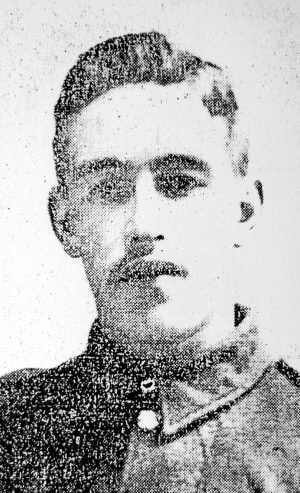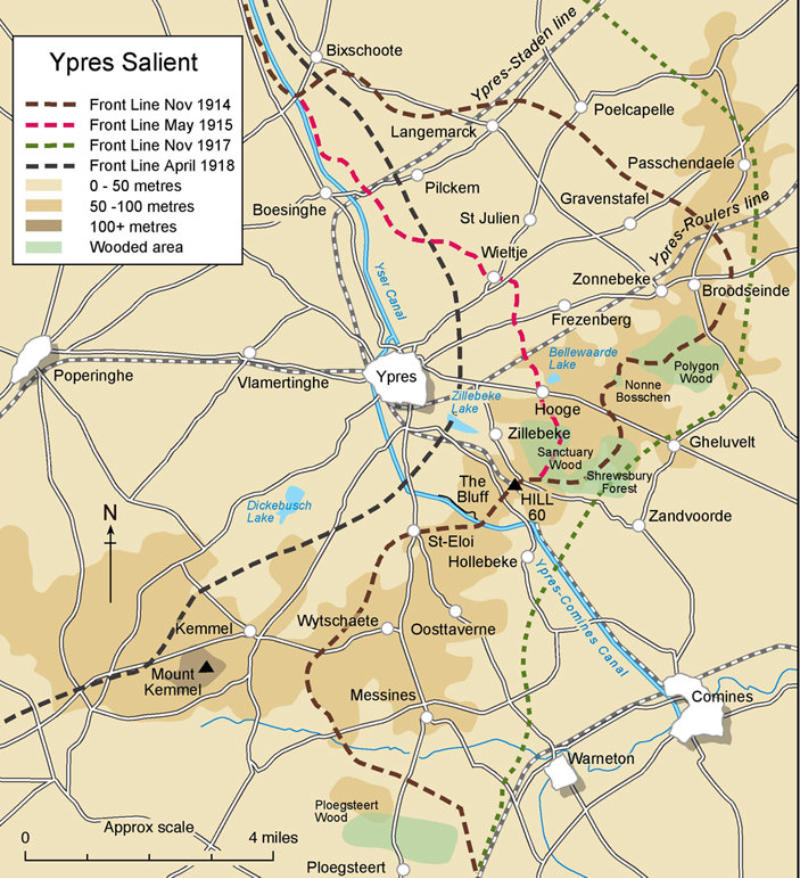
Samuel Green was born in 1893 in the Wakefield Registration District. Formerly of Junction lane, Ossett Common.
Private Green’s regimental number of 10465 means that he joined 1st Battalion KOYLI probably in 1911 when he was 18 years of age.
The 1st Battalion of KOYLI was a regular army battalion and at the start of WW1 in August 1914 was based in Singapore. The Battalion returned to England and landed at Southampton on the 9th November 1914. On the same day they removed to Hursley Park and then on to Harwich on the 18th November. On the 17th December 1914, the battalion returned to Hursley Park and came under command of 83rd Brigade in the 28th Division. On the 16th January 1915 they landed at Le Havre. On the 26th October 1915, the formation sailed from Marseilles for Salonika, arriving on the 7th December. On the 20th June 1918, they left the Division and moved to France, landing at Taranto (Italy) on the 2nd July 1918. On the 16th July 1918, the battalion was attached to 151st Brigade in 50th (Northumbrian) Division.
Samuel Green was killed at the Battle of St Julien between the 24th April and 5th May 1915, part of the 2nd Battle of Ypres where 28th Division suffered massive casualties. The Germans used chlorine gas on the British and French defenders for the first time and this was to cause many deaths.
After the first German chlorine gas attacks, Allied troops were supplied with masks of cotton pads that had been soaked in urine. It was found that the ammonia in the pad neutralized the chlorine. These pads were held over the face until the gas dispersed. Other soldiers preferred to use handkerchiefs, a sock, a flannel body-belt, dampened with a solution of bicarbonate of soda, tied across the mouth and nose until the gas passed over. Soldiers found it difficult to fight like this and attempts were made to develop a better means of protecting men against gas attacks.[21] By July 1915 soldiers were given efficient gas masks and anti-asphyxiation respirators.1
On the 1st May 1915, the 1st Battalion KOYLI were in trenches at Frezenberg with 570 men, but had been subject to enemy shelling all day. The 83rd Brigade had 5 men killed and another 16 men wounded 2 and it is assumed that Private Samuel Green was wounded and then died the next day. There was another gas attack by the Germans on the 2nd of May 1915, but not in the 83 Brigade sector at Frezenberg.

Private Samuel Green was killed in action on the 2nd May 1915, aged 21 years. He is remembered on Panel 47 at the Ypres (Menin Gate) Memorial,3 Ieper, West-Vlaanderen, Belgium. Ypres (now Ieper) is a town in the Province of West Flanders. The Memorial is situated at the eastern side of the town on the road to Menin (Menen) and Courtrai (Kortrijk).
The Menin Gate is one of four memorials to the missing in Belgian Flanders which cover the area known as the Ypres Salient. Broadly speaking, the Salient stretched from Langemarck in the north to the northern edge in Ploegsteert Wood in the south, but it varied in area and shape throughout the war.
The Salient was formed during the First Battle of Ypres in October and November 1914, when a small British Expeditionary Force succeeded in securing the town before the onset of winter, pushing the German forces back to the Passchendaele Ridge. The Second Battle of Ypres began in April 1915 when the Germans released poison gas into the Allied lines north of Ypres. This was the first time gas had been used by either side and the violence of the attack forced an Allied withdrawal and a shortening of the line of defence.
There was little more significant activity on this front until 1917, when in the Third Battle of Ypres an offensive was mounted by Commonwealth forces to divert German attention from a weakened French front further south. The initial attempt in June to dislodge the Germans from the Messines Ridge was a complete success, but the main assault north-eastward, which began at the end of July, quickly became a dogged struggle against determined opposition and the rapidly deteriorating weather. The campaign finally came to a close in November with the capture of Passchendaele.
The German offensive of March 1918 met with some initial success, but was eventually checked and repulsed in a combined effort by the Allies in September. The battles of the Ypres Salient claimed many lives on both sides and it quickly became clear that the commemoration of members of the Commonwealth forces with no known grave would have to be divided between several different sites.
The site of the Menin Gate was chosen because of the hundreds of thousands of men who passed through it on their way to the battlefields. It commemorates casualties from the forces of Australia, Canada, India, South Africa and United Kingdom who died in the Salient. In the case of United Kingdom casualties, only those prior 16 August 1917 (with some exceptions). United Kingdom and New Zealand servicemen who died after that date are named on the memorial at Tyne Cot, a site which marks the furthest point reached by Commonwealth forces in Belgium until nearly the end of the war. New Zealand casualties that died prior to 16 August 1917 are commemorated on memorials at Buttes New British Cemetery and Messines Ridge British Cemetery.
The Ypres (Menin Gate) Memorial now bears the names of more than 54,000 officers and men whose graves are not known.
References:
1. 2nd Battle of Ypres – Battle of St. Julien
2. 28th Division, 83rd Infantry Brigade War Diary, May 1915